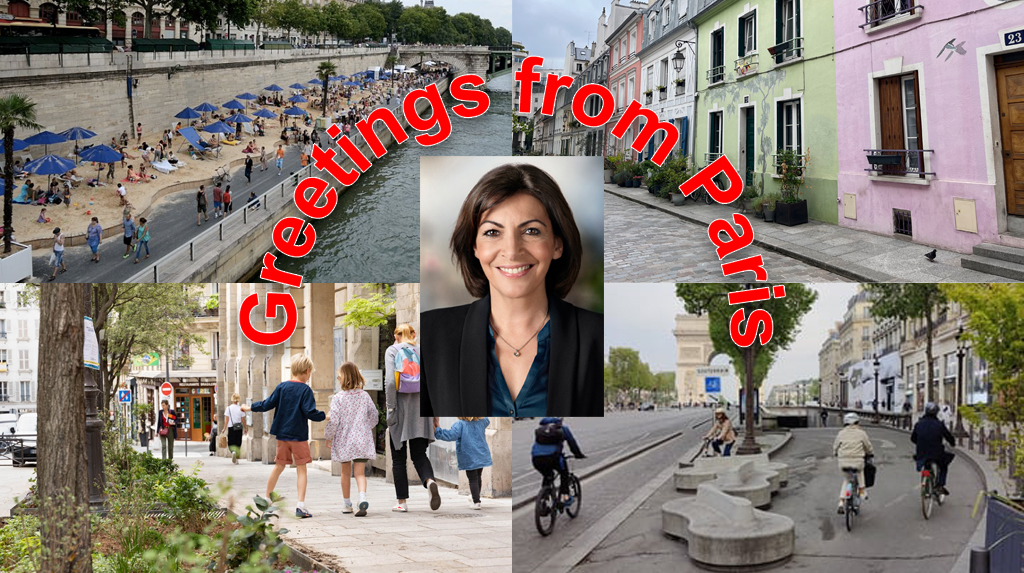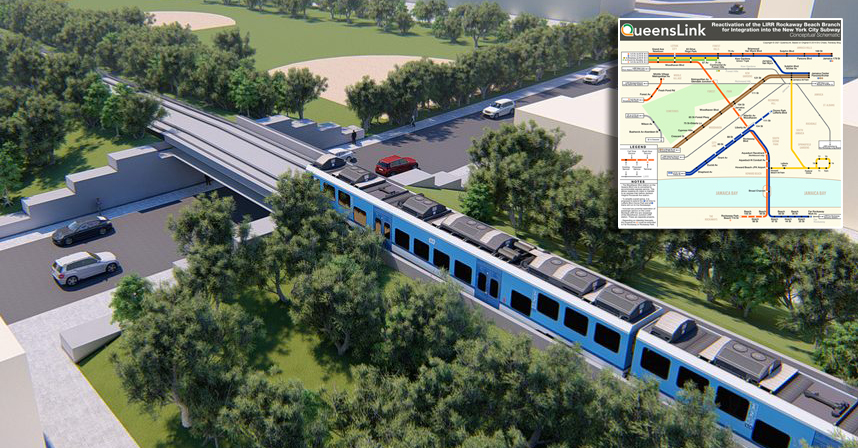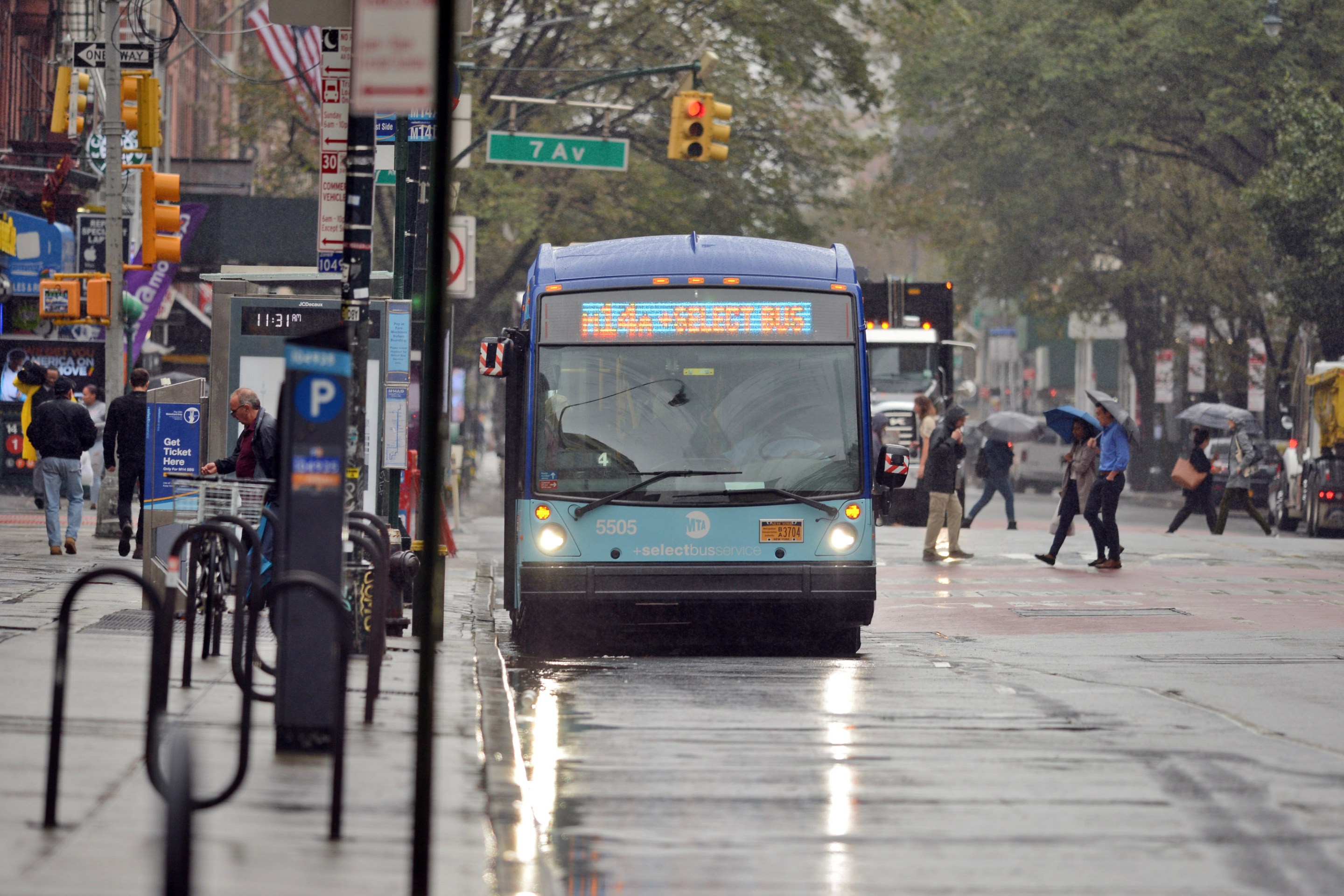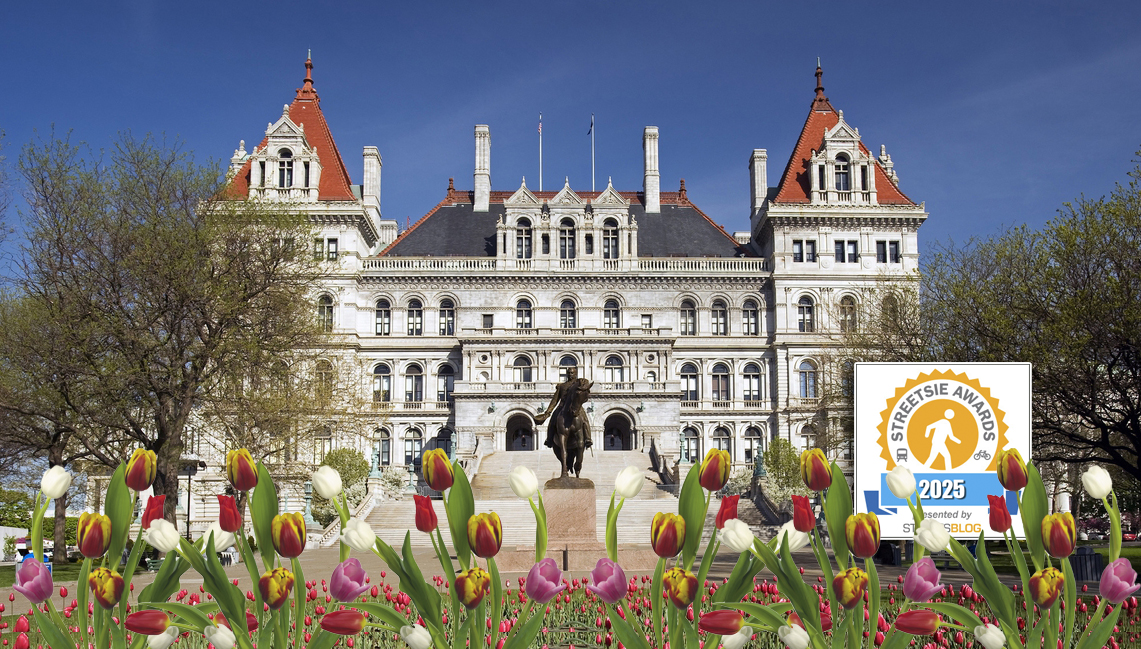PARIS — New York and Paris have a lot in common, but the City of Light is still eating our déjeuner when it comes to increasing livability and pointing the way towards a vehicle-free future.
This spring, as U.S. Transportation Secretary Sean Duffy threatened to cancel congestion pricing and rip out urban bike lanes, Parisians voted to remove cars from 500 streets and restore 10 percent of the city’s parking spaces to public space.
The initiative will transform five to eight roads in each neighborhood at an average cost of $540,000 per project. It comes after Mayor Anne Hidalgo has already calmed 300 busy streets in the past five years, making the French capital a friendlier place for flâneurs to shop and stroll.
New York has long talked about a pedestrian renaissance, but it has always stalled. But Mayor-in-Waiting Zohran Mamdani did tell Streetsblog earlier in the campaign that he would convert travel lanes into pedestrian squares, build more protected bike lanes, adopt more busways, and revamp the city’s bus rapid transit service if he became mayor.
Après lui, la revolution. But Paris actually shows that transforming streets can be easy. Let us count the ways:
Bollards
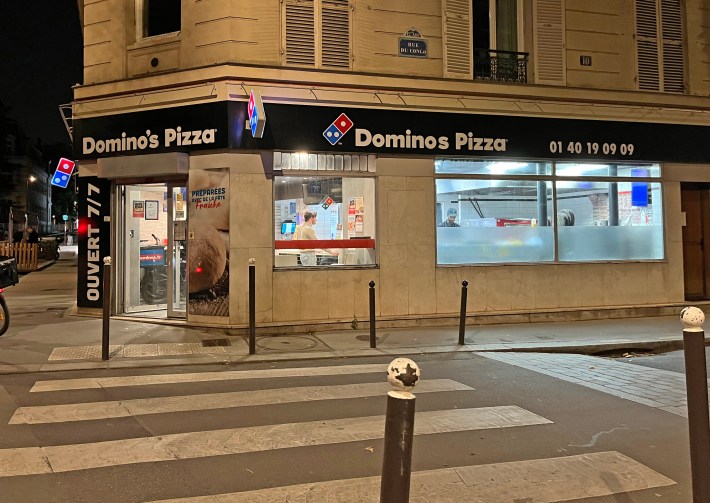
In Paris, bollards are everywhere.
These sturdy posts, often painted dark green and made of steel or cast iron topped by a sphere, dot the city’s well-traversed corridors, guarding curbs like sentries.
They stand about three feet high, a little taller than your average baguette, and are placed wide enough on the sidewalk for a stroller or a wheelchair to pass easily, but close enough together that a Vespa rider would think twice about speeding through them.
More important, they deter vehicles from edging too close to bike paths and making sharp turns at intersections. Thanks to bollards, you are more likely to observe someone drinking white wine with steak frites than see a car parked on a sidewalk.
Slip lanes
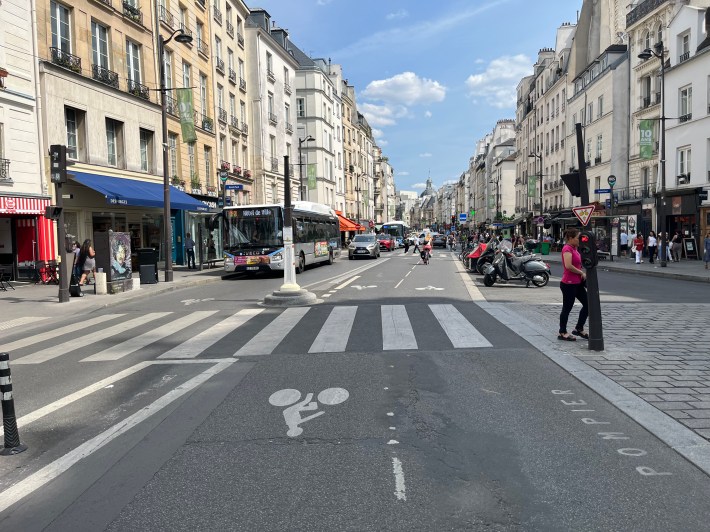
In the United States, slip lanes allow drivers to make a right turn at an intersection without stopping, making it dangerous for pedestrians to cross.
Paris uses them in a different way, as a one-way parking lane with space for cyclists and scooters next to a two-lane road for vehicles and the sidewalk.
Bollards and other steel gates separate the pedestrian path from the slip lane, while street lamps and trees sit in a raised sidewalk between the slip lane and the road, creating another border for cars.
The overall effect forces drivers to slow down, calming the entire roadway, and making it easier for a pedestrian to cross.
Bike storage
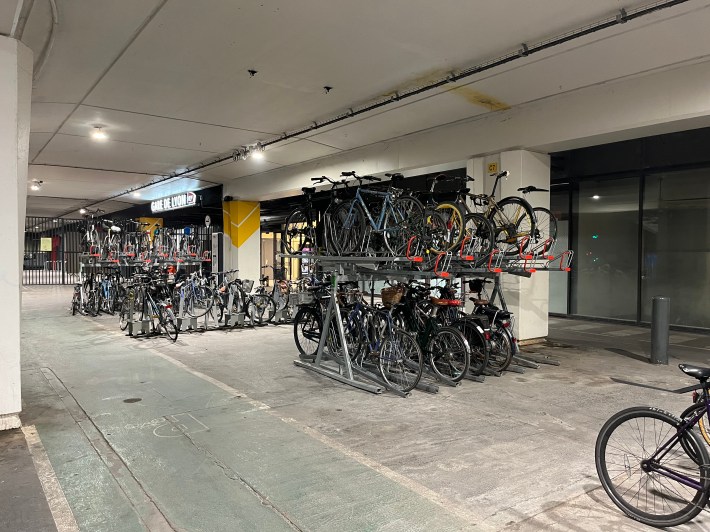
Paris takes its demand for secure bike storage seriously.
Its transit hubs often feature video-monitored garages and luggage repositories for keeping hundreds of bikes and scooters, offering commuters the option to safely store their bike while they’re at the office or on a weekend getaway.
At Gare de Lyon, a train station in southeast Paris, its Van Gogh bike station offers covered storage facilities with sturdy hoops for locking up to 200 bicycles as well as charging stations for revving up electric-assisted bikes. The parking station offers cyclists access 24 hours a day with lockers for storing clothing and equipment (rates are $12 per month or $87 per year).
New York is expected to add 500 bike parking facilities in the next five years, including small pods that will accommodate 10 to 12 bikes and medium-sized ones that can fit dozens at a time, but there’s nothing that rivals what exists at Paris’s train stations.
Subway signage
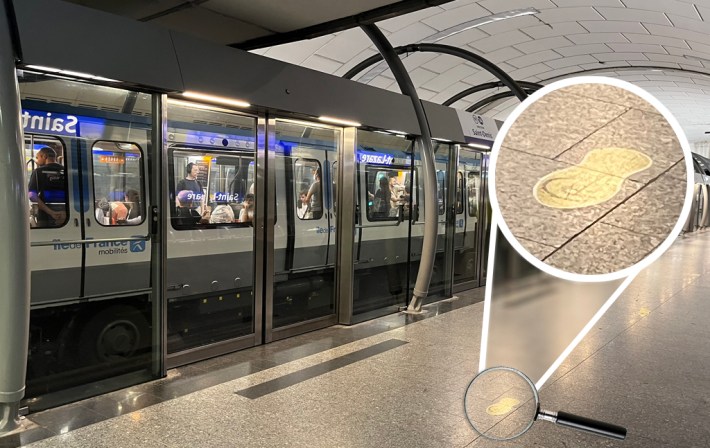
You don’t need to speak French to navigate the Paris Métro.
The 153-mile mostly underground subway system has 321 stations, where one out of five of them includes a transfer to another line. That doesn’t include its regional rail train network that connects to airports and suburban enclaves like Versailles.
What could be confusing for foreigners isn't because each station has helpful signs that indicate which way to walk to catch another train and which end of the station will lead you to a specific street.
There are also color-coded footsteps painted onto the floor of the station that guide you to your next destination so you won’t get lost, perhaps the most helpful low-tech design in the entire city.
Creative turnstiles
The Métro has also installed different turnstile designs and subway gates to improve the safety of straphangers.
At most station entrances, tall gates automatically open when you scan your ticket, but they also alert security personnel when someone tries to evade the fare. Several stations also have transparent barriers along the length of the platform with screen doors that align with train doors once the subway arrives, preventing people from falling onto the tracks (New York has replaced some turnstiles with more modern fare gates and put metal sheaths on others to deter fare evasion).
But the most interesting innovation was a pilot project where turbine-shaped turnstiles at Paris’s Miromesnil station turned straphangers’ kinetic energy from crossing into electricity. If the turnstiles were installed throughout the system, they could save 30,000 tons of carbon dioxide annually, the energy company responsible for the pilot estimated.
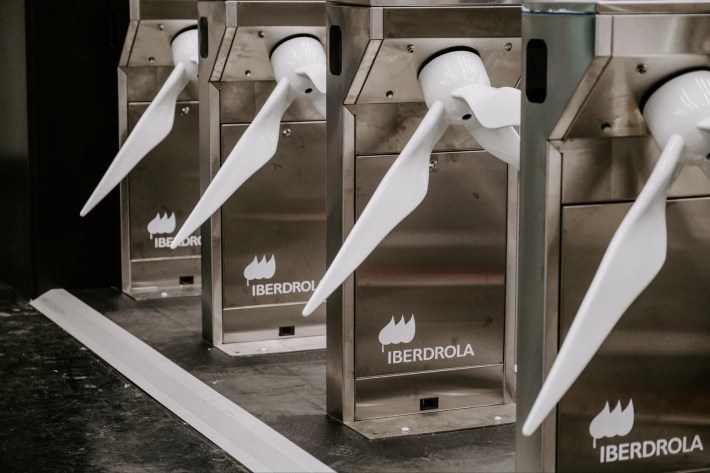
Alas, a systemwide upgrade may be too expensive but Parisian engineering students are working on more prototypes, according to Bloomberg City Lab.
Public toilets
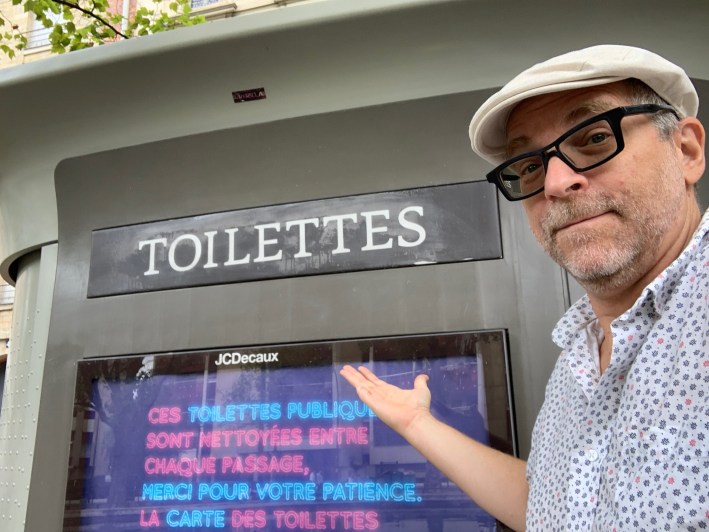
Parisians have been peeing in the street a lot longer than New Yorkers.
The city of Paris is 2,300 years old after all but it also has among the highest numbers of public bathrooms per capita in Europe (roughly 18 per square mile) with 435 self-contained toilets and another 300 or so urinals. Some cost a nominal fee of less than $1, but many are free and open from 6 am to 10 pm.
Last year, Paris’s lavatory fleet got an overdue upgrade before the Summer Olympics and now boast self-cleaning latrines that are washed and disinfected after each use with a two-thirds reduction in water consumption and significantly shorter wait times.
The toilets also have external fountains with a hand-washing station. The city has updated an app that allows users to check the availability of facilities near them. Because you never know when that one fruit de mer in your moules frites is a sour one.
Water features

Climate change has warmed Paris about 3 degrees over the past 100 years, and there's been a brutal heat wave this summer.
City officials had to deal with once-unthinkable temperatures close to 109 degrees, and they did it by replacing parking spaces with more trees and adding water stations that spray mist or jets of water near public plazas that can bake in the sun. Officials also repurposed cast-iron water fountains by adding small nozzles to emit mist at regular intervals.
This summer, the city opened three new pools in the Seine after treating the water and preventing sewer overflows.
New York's much-vaunted "Plus" pool in the East River has been stalled for years. And many more parks and plazas could incorporate misting stations as summer in the city becomes a hot mess.
